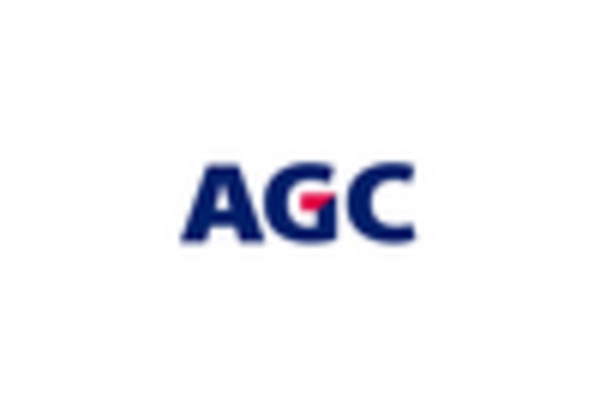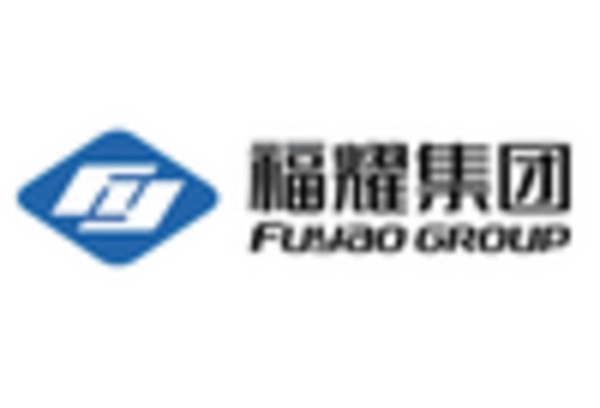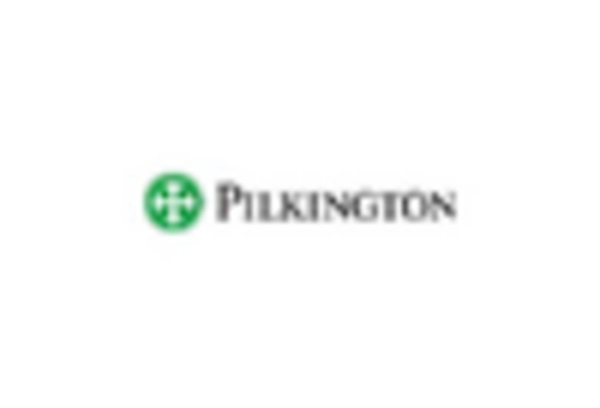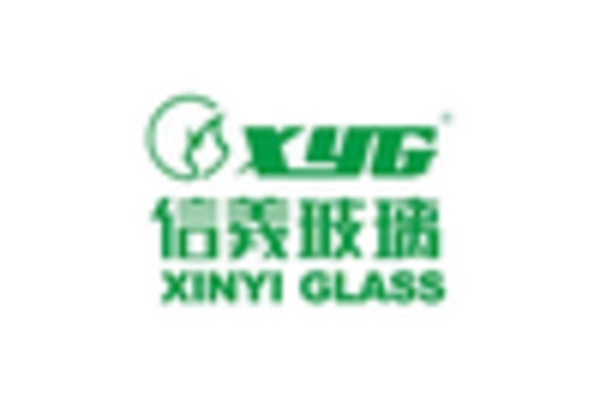Growth of the Automotive Sector
The growth of the automotive sector is a significant driver for the Automotive Windscreen Glazing Market. As vehicle production rates rise, the demand for high-quality windscreen glazing is expected to follow suit. Recent projections indicate that the automotive industry could see a compound annual growth rate (CAGR) of around 4% over the next five years, which will directly impact the glazing market. Additionally, the increasing popularity of SUVs and luxury vehicles, which often require advanced glazing solutions, is likely to further stimulate demand. This growth presents opportunities for manufacturers to innovate and expand their product offerings within the Automotive Windscreen Glazing Market.
Customization and Personalization Trends
The Automotive Windscreen Glazing Market is witnessing a notable trend towards customization and personalization, as consumers increasingly seek unique features in their vehicles. This demand for tailored solutions is prompting manufacturers to offer a variety of glazing options, including tinted, heated, and acoustic glass. Such features not only enhance the aesthetic appeal of vehicles but also improve comfort and safety. Market analysis suggests that the customization segment within the Automotive Windscreen Glazing Market could account for up to 30% of total sales by 2026. This trend reflects a broader shift in consumer preferences, where individuality and personal expression are prioritized in automotive design.
Regulatory Compliance and Safety Standards
Regulatory compliance and safety standards play a crucial role in shaping the Automotive Windscreen Glazing Market. Governments worldwide are implementing stringent regulations regarding vehicle safety, which directly influences the design and manufacturing of automotive glazing. Compliance with these regulations ensures that windscreen products meet safety requirements, such as impact resistance and UV protection. As a result, manufacturers are investing in research and development to create products that not only comply with existing standards but also anticipate future regulations. This proactive approach is likely to enhance the reputation of the Automotive Windscreen Glazing Market, fostering consumer trust and potentially increasing market share.
Sustainability Initiatives in Automotive Windscreen Glazing
Sustainability initiatives are gaining traction within the Automotive Windscreen Glazing Market, driven by increasing consumer awareness and regulatory pressures. Manufacturers are focusing on producing eco-friendly glazing solutions, such as using recycled materials and reducing energy consumption during production. The shift towards electric vehicles, which often require specialized glazing to enhance efficiency, further propels this trend. Recent statistics indicate that the demand for sustainable automotive components is expected to grow by 20% in the coming years, significantly impacting the Automotive Windscreen Glazing Market. This focus on sustainability not only aligns with global environmental goals but also appeals to a growing segment of environmentally conscious consumers.
Technological Advancements in Automotive Windscreen Glazing
The Automotive Windscreen Glazing Market is experiencing a surge in technological advancements that enhance the performance and safety of vehicles. Innovations such as laminated glass, which provides better impact resistance, and smart glass technologies that can adjust transparency are becoming increasingly prevalent. These advancements not only improve visibility but also contribute to energy efficiency by regulating cabin temperature. According to recent data, the integration of advanced glazing technologies is projected to increase the market share of the Automotive Windscreen Glazing Market by approximately 15% over the next five years. Furthermore, the development of self-healing glass, which can repair minor scratches and chips, is likely to attract consumers seeking durability and longevity in their automotive components.


















Leave a Comment